Noah Davis at the Barbican: long overdue, emotional and timely
A decade after Noah Davis' untimely death, the Barbican has staged the first institutional retrospective of his work.
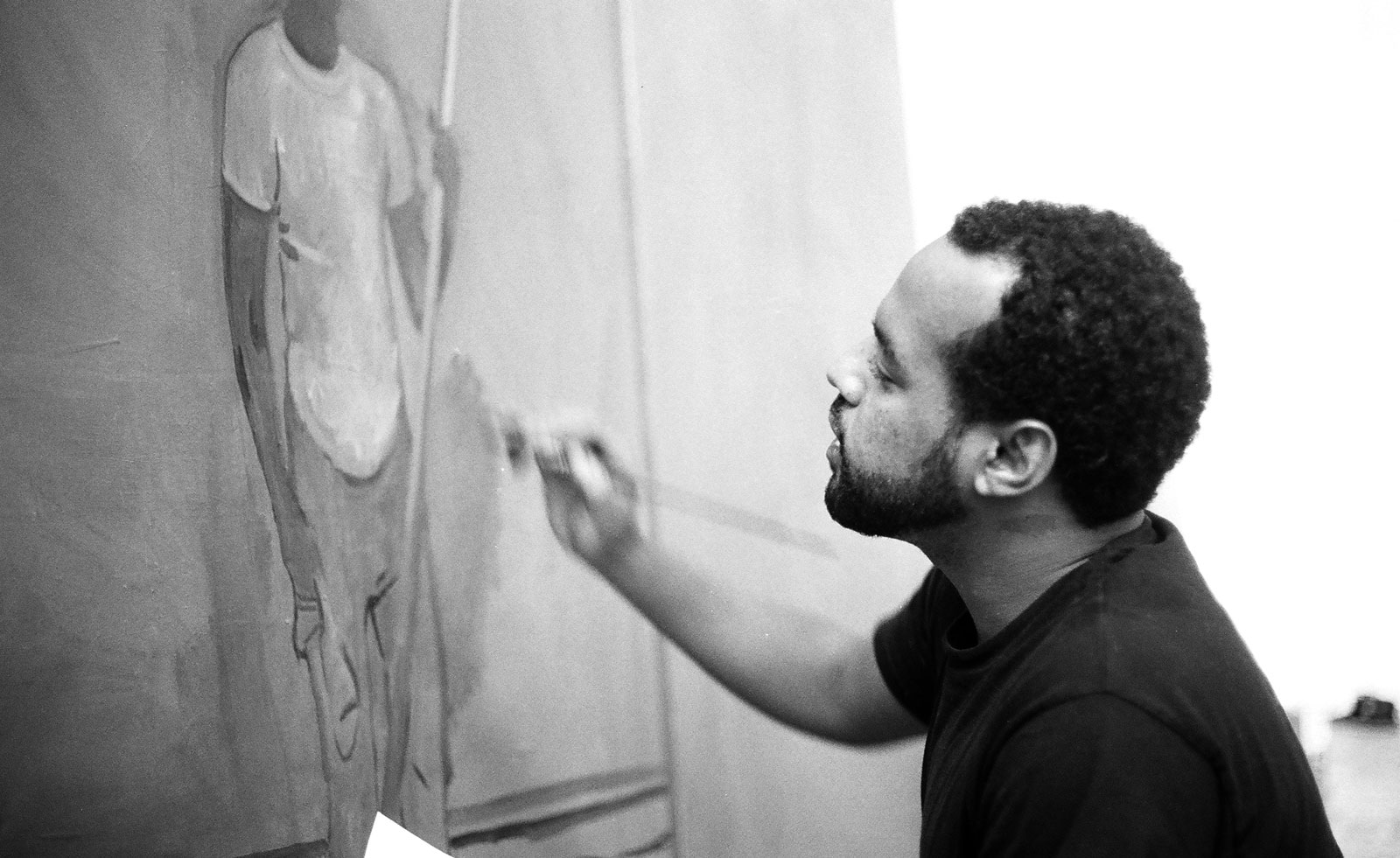
Noah Davis passed away in 2015 aged 32, leaving behind him an extensive body of work. Davis's staggering talent as a painter is offset by his eye for the uncanny, a forensic knowledge of the history of painting and the ability to fuse these elements to create truly beautiful art. Now, a decade after his death the Barbican has staged the first institutional retrospective of his work.
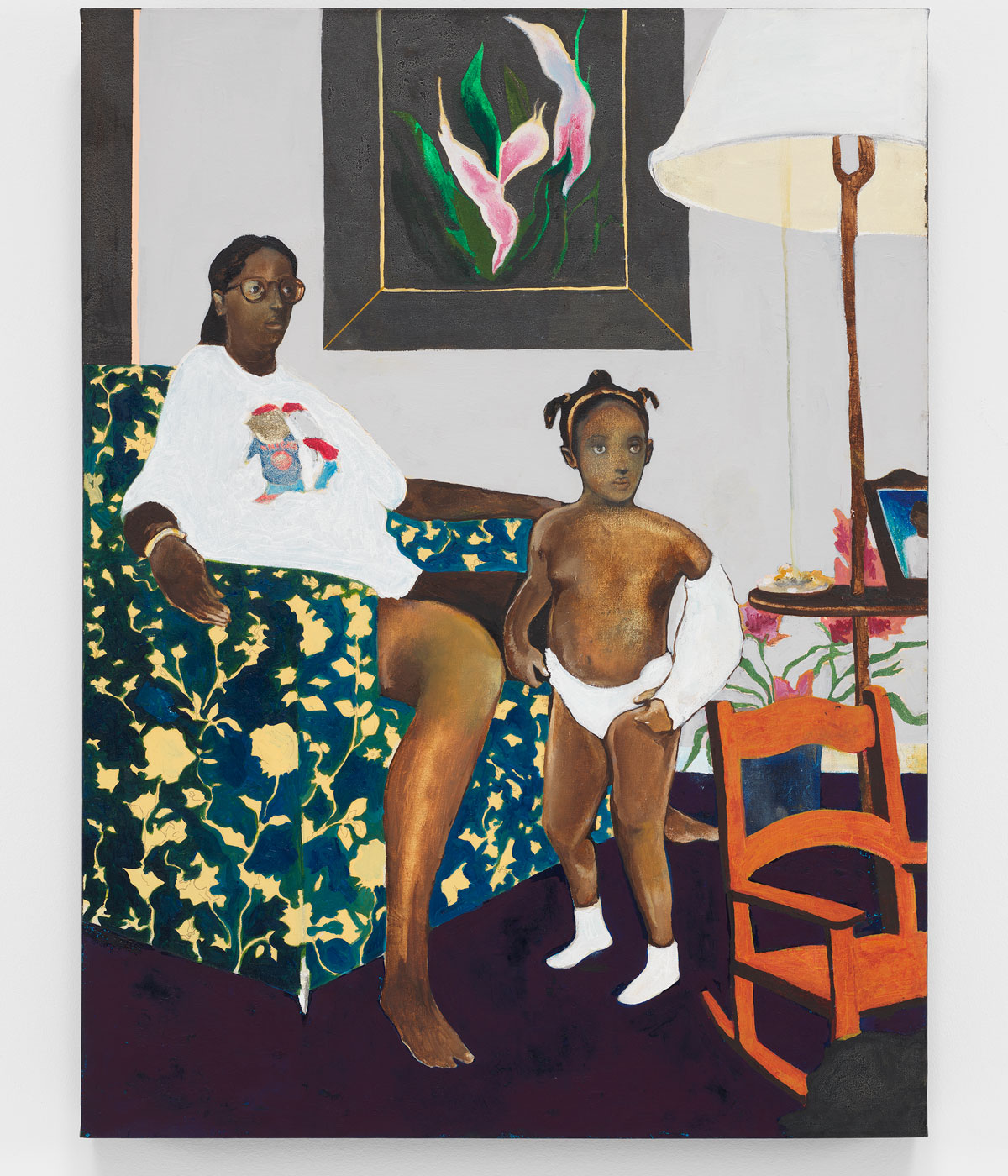
Noah Davis, Single Mother with Father out of the Picture, 2007–8 © The Estate of Noah Davis. Courtesy The Estate of Noah Davis and David Zwirner. Photo: Kerry McFate
'There is a desire to understand what painting is, and why there is this increased attention on painting. When we talk about contributing to the discipline, Noah Davis is singular and extraordinary,” says curator Fray-Smith of Davis’s practice. “He is in his work, he is able to combine these dual impulses that we're living through now, one being the digital and recourse to images and the proliferation of images we see online and then the other is this desire for things to slow down and to have analogue experiences.'
Davis collected photographs he found at flea markets, took photographs himself and used images taken by friends or Karon to create some of his paintings. The photographs he collected were ‘slices of life’ from the Black community which he combined with these other images, shots of daytime television, references to ancient mythology and art history. The results are impeccably composed references to all areas of Black life, but also dreamlike, uncanny subjects.
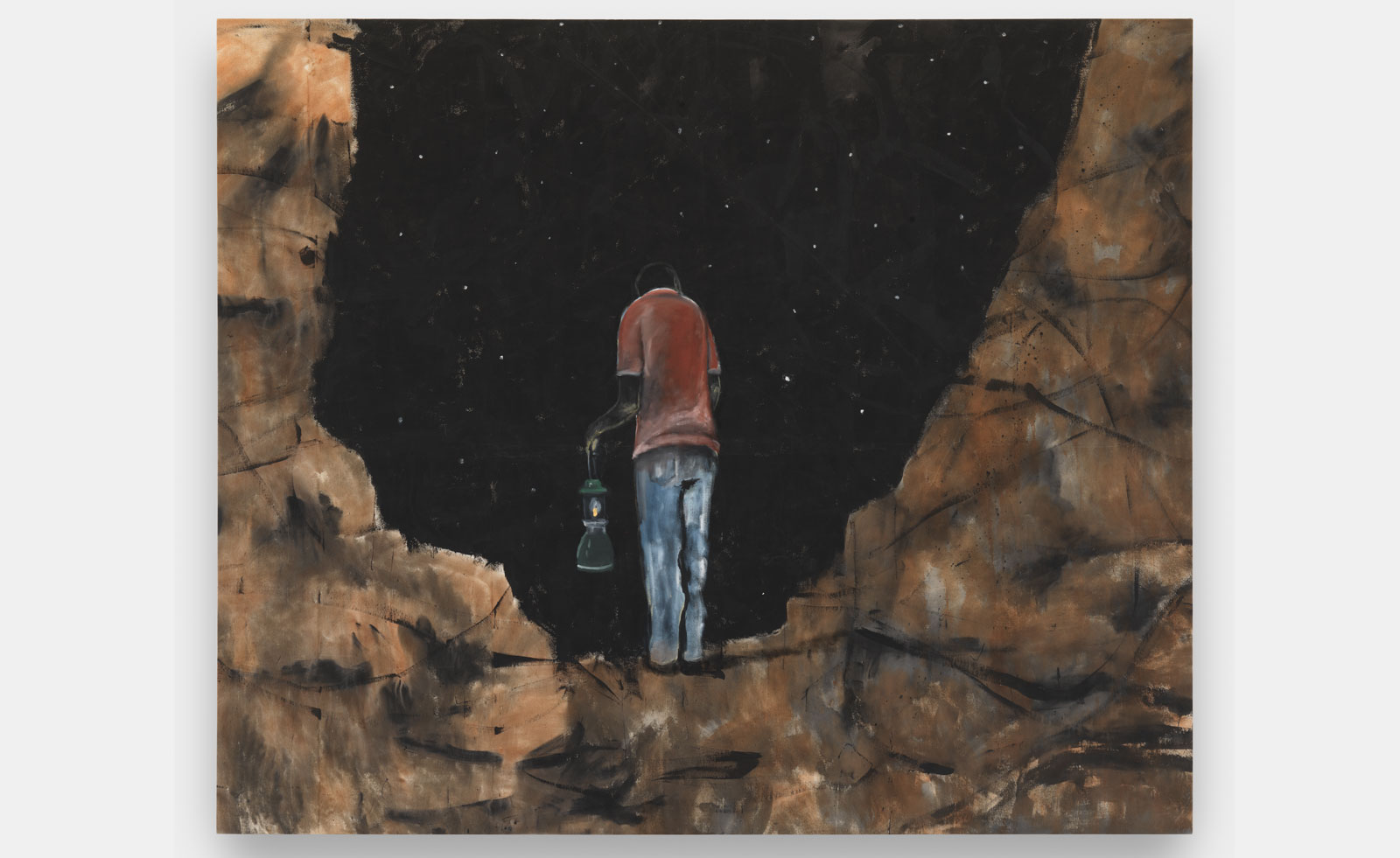
Noah Davis, Painting for My Dad, 2011 Rubell Museum © The Estate of Noah Davis. Courtesy The Estate of Noah Davis and David Zwirner. Photo: Kerry McFate
We see a Seurat-esque swimming scene executed in sublime shades of blue, a chorus of ballet dancers pirouetting in formation outside a row of condos, a man sitting alone in the woods with a gun. There is something of Manet and Munch in how Davis handles paint, combining think and thinner layers in a reference of historical painterly techniques. There is also another, deliberate layer of meaning in how he treated his subjects, in his placing of these figures at points in time where they had previously been ignored.
'I think one of the key thrusts in the work, is that so much of these paintings draw from within reality and beyond reality. I think that contributes to the uncanny feeling of many of them,' explained Fray-Smith.
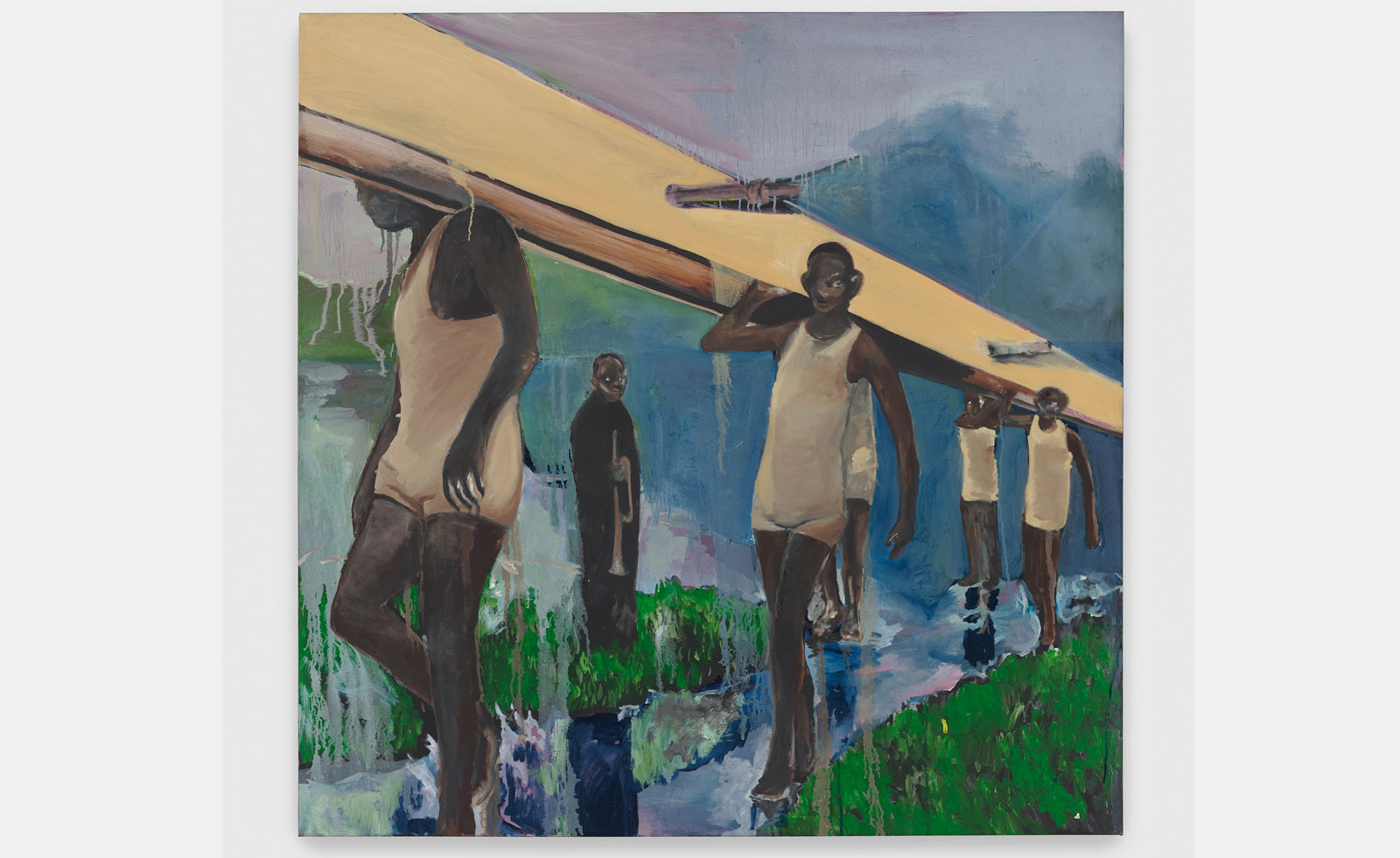
Noah Davis, The Year of the Coxswain, 2009. Studio Museum in Harlem; gift of Martin and Rebecca Eisenberg © The Estate of Noah Davis. Courtesy The Estate of Noah Davis and David Zwirner. Photo: Anna Arca
His compositions and the physical and metaphorical layers of meaning in his work was something the curators wanted to bring across. Fray-Smith recalls the work A Painting for My Dad, 2011, after his father had been diagnosed with terminal cancer. 'Davis had become a father himself four months earlier, and he paints a scene of a lone man standing on a precipice, essentially standing on a rocky abyss, looking out into a dark sky like the cosmos. It's this beautiful image of being between one world and the next. Davis paints the cosmos in a kind of thicker, viscous black paint and the rocks on which here standing are applied thinly. You can see the layers of paint overlap, you can see almost the texture in the weave of the canvas, as though to suggest what is real may, in fact, be what is beyond, and that his grip on this realm was as thin as the painting was.'
Davis left a large body of work behind him, and this exhibition traces a narrative line through it in a way that opens up his practice. Hung chronologically, with some audio interpretation from luminaries including the painter Marlene Dumas, it starts in 2007 and ends at the end of his life. He painted for as long as he could, and these late paintings, faded in their palette and thinly layered, are both accomplished and incredibly sad.
Wallpaper* Newsletter
Receive our daily digest of inspiration, escapism and design stories from around the world direct to your inbox.
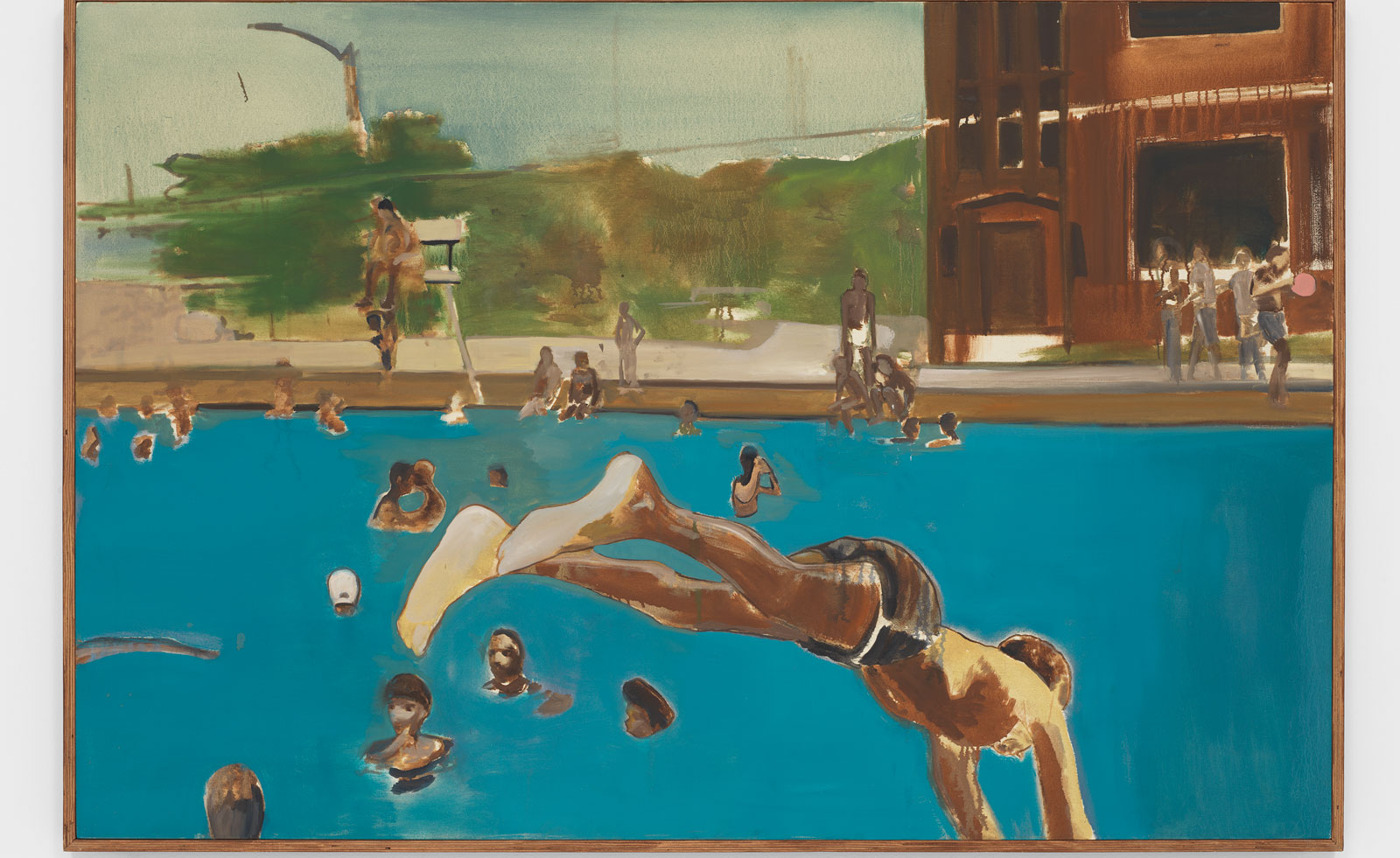
Noah Davis, 1975 (8), 2013. © The Estate of Noah Davis. Courtesy The Estate of Noah Davis and David Zwirner. Photo: Kerry McFate
'The exhibition tries to tackle the expanse of Davis's creativity, so there's him as a painter, as a curator and as someone who was devoted to art and culture. It's making but also how it was seen and understood. And I think he appreciated that it is art has this fantastic ability to bring people together. And he wanted to bring people together, and it's in the coming together that meaning and richness happens and so we are. While the show is primarily focusing on his painting, we also do address The Underground Museum [the free space Davis co-founded] and particularly what it was in his lifetime.'
The exhibition re-stages the first show at The Underground Museum. Davis tried to borrow work from institutions, with the only one willing to lend being The Museum of Contemporary Art (MOCA). Curator and podcaster Helen Molesworth gave him access to the entire collection, and he curated a number of exhibitions, with only one realised before his death.
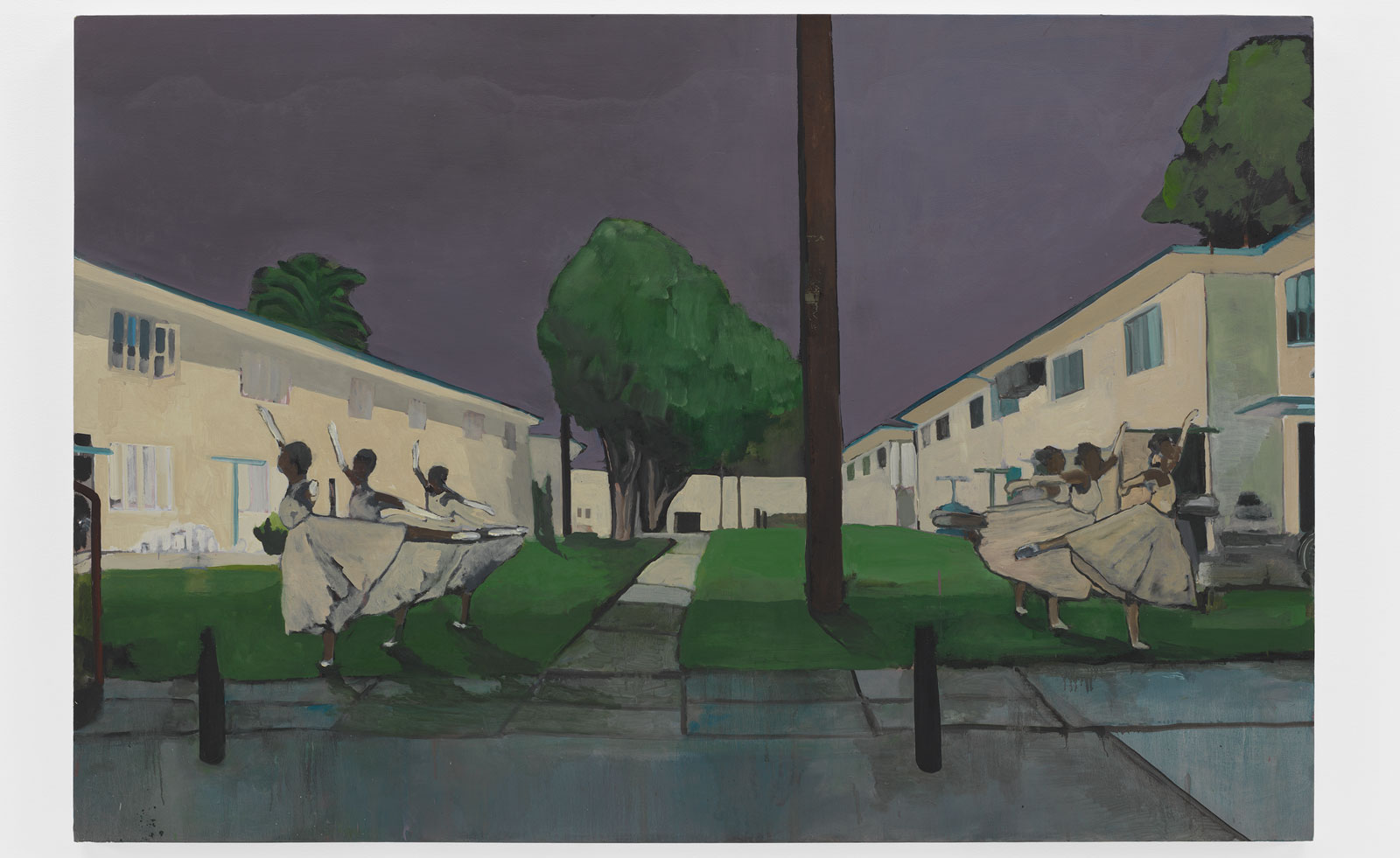
Noah Davis, Pueblo del Rio: Arabesque, 2014. © The Estate of Noah Davis. Courtesy The Estate of Noah Davis and David Zwirner. Photo: Kerry McFate
'Noah Davis was an absolute genius in that he was able to take something that the market in 2011 valued - and it was a predominantly white art market - and he asked why,' says Fray-Smith. 'That question of why is so relevant as these undersides of histories are revealed as markets shift. The why and the questioning becomes this great critique, and, in a way, special to show'
Noah Davis at the Barbican is both long overdue and incredibly timely, as the world catches up with him, ready to digest the enormity of what he had to say and his talent.
The exhibition will tour to DAS MINSK in Potsdam, The Hammer in Los Angeles and The Philadelphia Museum of Art.
Noah Davis is at the Barbican until 11 May 2025
Amah-Rose Abrams is a British writer, editor and broadcaster covering arts and culture based in London. In her decade plus career she has covered and broken arts stories all over the world and has interviewed artists including Marina Abramovic, Nan Goldin, Ai Weiwei, Lubaina Himid and Herzog & de Meuron. She has also worked in content strategy and production.
-
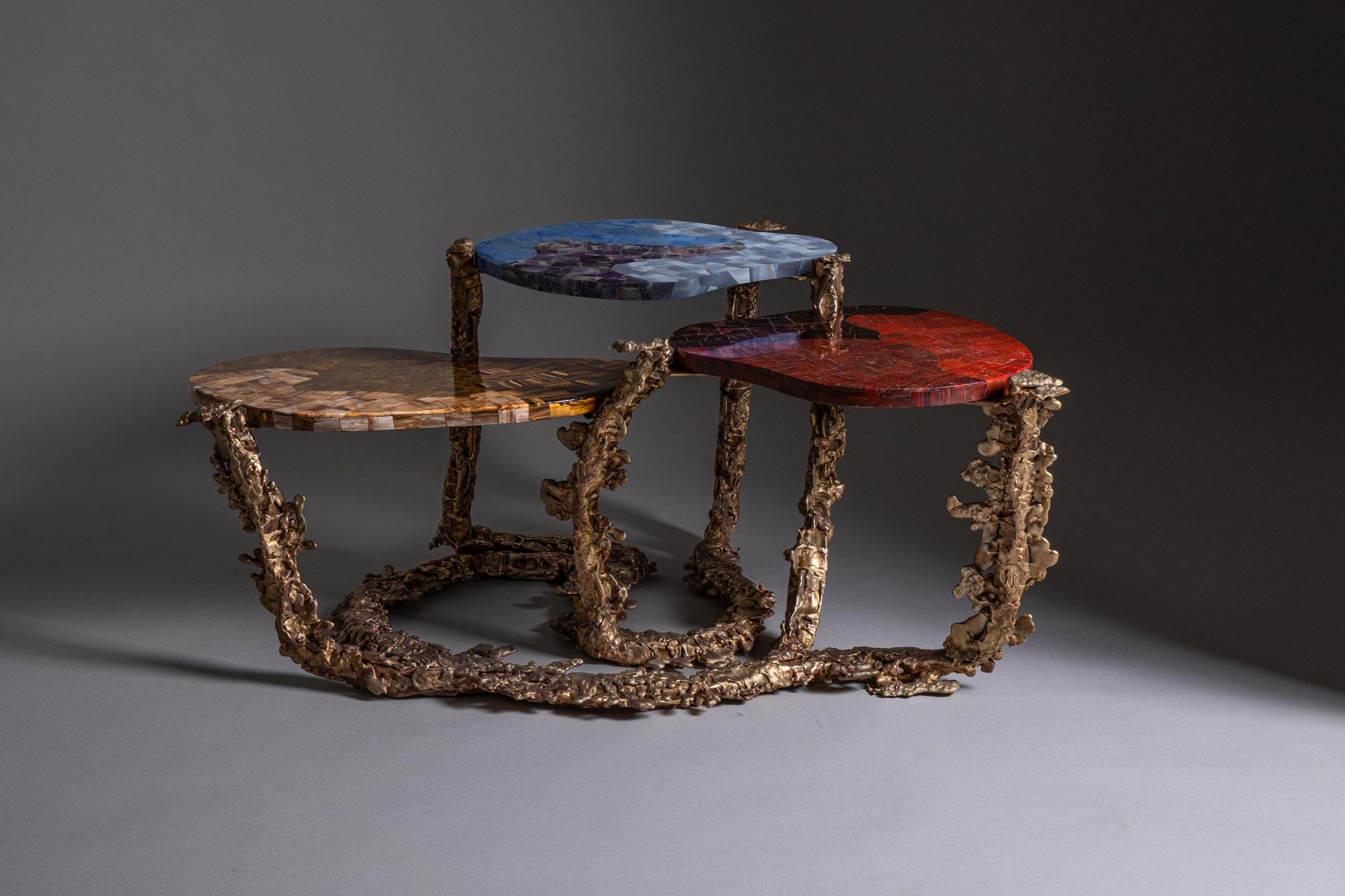 Inside the Shakti Design Residency, taking Indian craftsmanship to Alcova 2025
Inside the Shakti Design Residency, taking Indian craftsmanship to Alcova 2025The new initiative pairs emerging talents with some of India’s most prestigious ateliers, resulting in intricately crafted designs, as seen at Alcova 2025 in Milan
By Henrietta Thompson Published
-
 Tudor hones in on the details in 2025’s new watch releases
Tudor hones in on the details in 2025’s new watch releasesTudor rethinks classic watches with carefully considered detailing – shop this year’s new faces
By Thor Svaboe Published
-
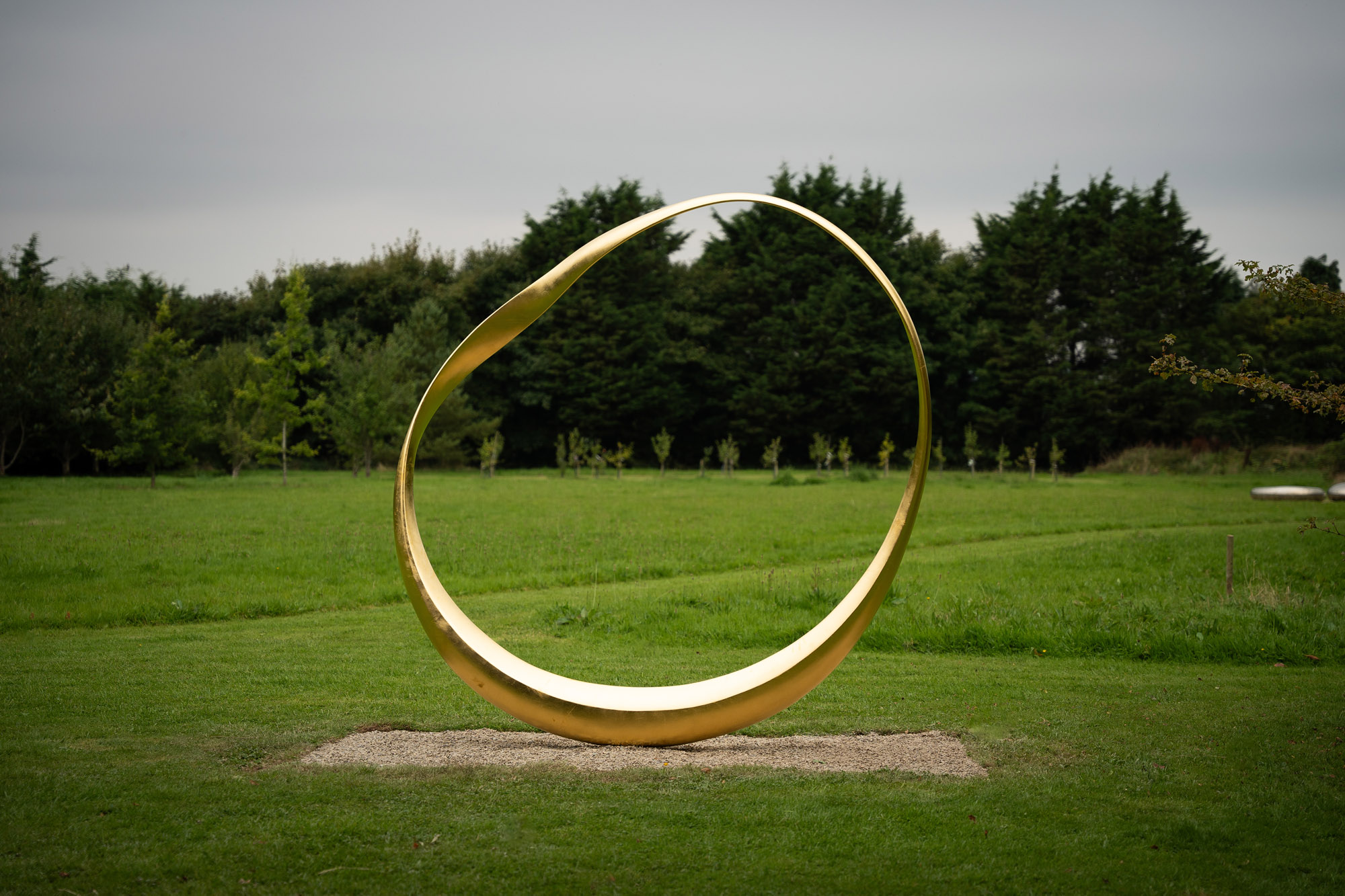 2025 Expo Osaka: Ireland is having a moment in Japan
2025 Expo Osaka: Ireland is having a moment in JapanAt 2025 Expo Osaka, a new sculpture for the Irish pavilion brings together two nations for a harmonious dialogue between place and time, material and form
By Danielle Demetriou Published